 W
WAlabama was central to the Civil War, with the secession convention at Montgomery, birthplace of the Confederacy, inviting other states to form a Southern Republic, during January–March 1861, and develop constitutions to legally run their own affairs. The 1861 Alabama Constitution granted citizenship to current U.S. residents, but prohibited import duties (tariffs) on foreign goods, limited a standing military, and as a final issue, opposed emancipation by any nation, but urged protection of African slaves, with trial by jury, and reserved the power to regulate or prohibit the African slave trade. The secession convention invited all slaveholding states to secede, but only 7 Cotton States of the Lower South formed the Confederacy with Alabama, while the majority of slave states were in the Union. Congress voted to protect the institution of slavery by passing the Corwin Amendment on March 4, 1861, but it was never ratified.
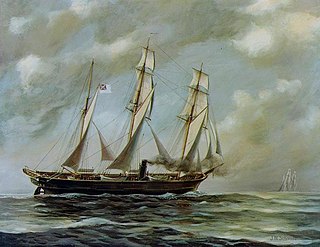 W
WCSS Alabama was a screw sloop-of-war built in 1862 for the Confederate States Navy at Birkenhead on the River Mersey opposite Liverpool, England by John Laird Sons and Company. Alabama served as a successful commerce raider, attacking Union merchant and naval ships over the course of her two-year career, during which she never docked at a Southern port. She was sunk in June 1864 by USS Kearsarge at the Battle of Cherbourg outside the port of Cherbourg, France.
 W
WAmerican Diver, also known as the Pioneer II, was a prototype submarine built for the Confederate States of America military. It was the first successor to the Pioneer. The Diver was invented and built by the same consortium that built the Pioneer in New Orleans. It was composed of Horace Lawson Hunley, James McClintock, and Baxter Watson. They were forced to move their operations to Mobile, Alabama following the capture of New Orleans by Union forces in April 1862. Although ultimately unsuccessful, it served as a model in the development of the consortium's next submarine, the H. L. Hunley. The Hunley eventually became the first combat submarine to sink an enemy warship.
 W
WCSS Baltic was an iron and cottonclad sidewheeler ship built in 1860 in Philadelphia as a river tow boat belonging to the Southern Steamship Co. She was purchased by the State of Alabama, converted to an armored ram, and turned over to the Confederate States Navy in the middle of 1862. Her first commanding officer was Lieutenant James D. Johnston.
 W
WThe Brierfield Furnace, also known as the Bibb Naval Furnace and Brierfield Ironworks, is a historic district in Brierfield, Alabama. The district covers 486 acres (197 ha) and includes one building and nine sites. It was listed on the National Register of Historic Places on November 20, 1974. The district is encompassed by Brierfield Ironworks Historical State Park.
 W
WCahaba Prison, also known as Castle Morgan, was a prisoner of war camp in Dallas County, Alabama where the Confederacy held captive Union soldiers during the American Civil War. The prison was located in the small Alabama town of Cahaba, at the confluence of the Alabama and Cahaba rivers, not far from Selma. It suffered a serious flood in 1865. At the time, Cahaba was still the county seat, but that was moved to Selma in 1866. Cahaba Prison was known for having one of the lowest death rates of any Civil War prison camp mainly because of the humane treatment from the Confederate commandant.
 W
WCahaba, also spelled Cahawba, was the first permanent state capital of Alabama from 1820 to 1825, and the county seat of Dallas County, Alabama until 1866. Located at the confluence of the Alabama and Cahaba rivers, it suffered regular seasonal flooding.
 W
WConfederate Memorial Park is an Alabama State Park located in Mountain Creek, in rural Chilton County, Alabama, United States. Its address is 437 County Road 63, Marbury, Alabama 36051. It is sometimes found with the same address in Verbena, Alabama 36091.
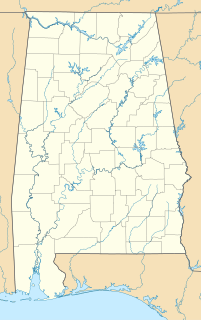 W
WFort Carney was a stockade fort built in 1813 in present-day Clarke County, Alabama during the Creek War.
 W
WFort Gaines is a historic fort on Dauphin Island, Alabama, United States. It was named for Edmund Pendleton Gaines. Established in 1821, it is best known for its role in the Battle of Mobile Bay during the American Civil War.
 W
WFort Harker, located near Stevenson, Alabama, was a military fortification built by the Union Army during the American Civil War. Constructed in the summer of 1862 by soldiers and freed slaves of the Army of the Cumberland, the fort helped secure strategic railroad lines to ensure the free movement of Union troops and supplies in southeastern Tennessee and northeastern Alabama. Union General William Rosecrans established his headquarters at Fort Harker in July, 1863, from where he directed a successful campaign against the position of Confederate General Braxton Bragg in Chattanooga, Tennessee. The fort would be abandoned after the war and fall into disrepair. After restoration, the site became a city park in 1985.
 W
WFort Morgan is a historic masonry pentagonal bastion fort at the mouth of Mobile Bay, Alabama, United States. Named for Revolutionary War hero Daniel Morgan, it was built on the site of the earlier Fort Bowyer, an earthen and stockade type fortification involved in the final land battles of the War of 1812. Construction was completed in 1834 and it received its first garrison in March of the same year.
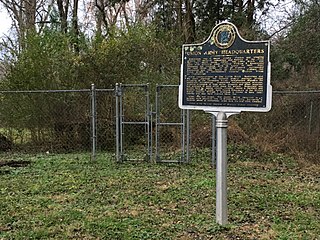 W
WThe General William Rosecrans Headquarters is a historic residence in Stevenson, Alabama. The house is a single-story brick hall and parlor house built circa 1855 as a residence for railroad engineers who were building the routes through Jackson County. In the buildup to the Chickamauga Campaign of the American Civil War, Union General William Rosecrans selected Stevenson as the staging site for battle. In addition to building Fort Harker just south of town, Rosecrans used the house as his personal headquarters. Walter Rosser, a construction engineer from Michigan, purchased the house and land before the war, and lived in the house after the war. As of 1978, the house was in ruins, with the roof, one wall and parts of the others collapsed. The house was listed on the National Register of Historic Places in 1978.
 W
WCSS Huntsville was a Confederate ironclad floating battery built at Selma, Alabama from 1862 to 1863 during the American Civil War.
 W
WThe John McMahon House is a Federal style mansion located in Courtland, Alabama. It is listed on the National Register of Historic Places. The two-story brick I-house was built in 1828.
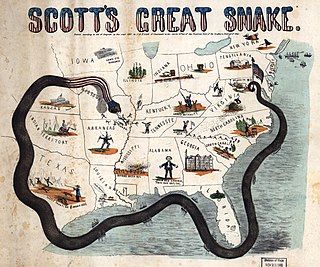 W
WThe Lower Seaboard Theater of the American Civil War encompassed major military and naval operations that occurred near the coastal areas of the Southeastern United States: in Alabama, Florida, Louisiana, Mississippi, South Carolina, and Texas) as well as southern part of the Mississippi River.
 W
WThe Alabama State Monument, also known as the Alabama State Memorial, is an Alabama memorial in Gettysburg National Military Park that commemorates the state's Confederate units that took part in the Battle of Gettysburg. It is located in an area that was occupied by Evander M. Law's Alabama Brigade prior to their attack on the Round Tops on July 2, 1863. It was dedicated by the Alabama Division of the United Daughters of the Confederacy on November 12, 1933.
 W
WThe Magee Farm, also known as the Jacob Magee House, is a historic residence in Kushla, Alabama, United States. Built by Jacob Magee in 1848, the 1+1⁄2-story wood-frame structure is an example of the Gulf Coast Cottage style. The house is best known as the site of preliminary arrangements for the surrender of the last Confederate States Army east of the Mississippi River. Confederate General Richard Taylor negotiated a ceasefire with Union General Edward Canby at the house on April 29, 1865. Taylor's forces, comprising 47,000 Confederate troops serving in Alabama, Mississippi and Louisiana, were the last remaining Confederate force east of the Mississippi River. The Magee Farm was placed on the National Register of Historic Places on February 11, 1988. In 2004, partially through the efforts of the Civil War Trust, a division of the American Battlefield Trust, which helped save 12.6 acres of the farm, the house was opened as a museum. It ceased operation as a museum in 2010, due to a lack of public support and declining revenues, and was listed for sale. It was then listed on the Alabama Historical Commission's Places in Peril listing for 2010.
 W
WMobile, Alabama during the American Civil War was an important port city on the Gulf of Mexico for the Confederate States of America. Mobile fell to the Union Army late in the war following successful attacks on the defenses of Mobile Bay by the Union Navy.
 W
WThe Mount Vernon Arsenal is a former United States Army munitions depot (arsenal), was used as a prison for captured Native Americans, and was served as a psychiatric hospital. It is listed on the National Register of Historic Places in Mount Vernon, Alabama. The site is home to the now closed Searcy Hospital. It was listed on the National Register of Historic Places on May 26, 1988 as the Mount Vernon Arsenal-Searcy Hospital Complex.
 W
WThe area known as "Nickajack" generally refers to the rugged Appalachian foothills in eastern Tennessee and northeastern Alabama. "Nickajack" is a corruption of the Cherokee word ᎠᏂ ᎫᏌᏘ Ᏹ (Ani-Kusati-yi) which translates to Coosa Town, but more likely references Koasati Town.
 W
WThe State Bank Building, Decatur Branch, commonly known as the Old State Bank, is a historic Jeffersonian-style bank building in Decatur, Alabama, United States. It was recorded by the Historic American Buildings Survey in 1934 and 1935. It was added to the National Register of Historic Places on March 24, 1972, due to its architectural significance.
 W
WPebble Hill, also known as the Scott-Yarbrough House, is an antebellum cottage in Auburn, Alabama listed on the National Register of Historic Places. It currently serves as the location of the Caroline Marshall Draughon Center for the Arts & Humanities in the College of Liberal Arts at Auburn University.
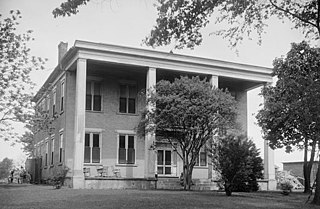 W
WThe Rhea–McEntire House, also known as the Rhea–Burleson–McEntire House, is a historic antebellum Greek Revival mansion located along the shoreline of the Tennessee River's Wheeler Lake in Decatur, Alabama.
 W
WThe Shelby Iron Company was an iron manufacturing company that operated an ironworks in Shelby, Alabama. The iron company produced iron for the Confederate States of America and was destroyed towards the end of the American Civil War. The company continued to produce iron until the early part of the 20th century.
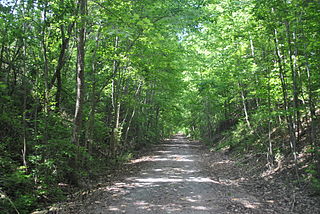 W
WThe Sulphur Trestle Fort Site is a historic Civil War battle site near Elkmont, Alabama. The fort was the site of the Battle of Sulphur Creek Trestle on September 25, 1864. After defeating Union Army forces and recapturing Athens, Alabama, Confederate General Nathan Bedford Forrest moved north to attempt to destroy a key railroad trestle. The trestle was defended by a fortification manned by 1000 Union soldiers. Forrest's troops easily defeated the Union forces and burned the trestle. Today, about 400 yards of trenches dug around the outside of the fort's parapet remain. The site was listed on the National Register of Historic Places in 1973.
 W
WThe Tannehill Ironworks is the central feature of Tannehill Ironworks Historical State Park near the unincorporated town of McCalla in Tuscaloosa County, Alabama. Listed on the National Register of Historic Places as Tannehill Furnace, it was a major supplier of iron for Confederate ordnance. Remains of the old furnaces are located 12 miles (19 km) south of Bessemer off Interstate 59/Interstate 20 near the southern end of the Appalachian Mountains. The 2,063-acre (835 ha) park includes: the John Wesley Hall Grist Mill; the May Plantation Cotton Gin House; and the Iron & Steel Museum of Alabama.
 W
WCSS Tuscaloosa was a screw ironclad steamer ram in the Confederate States Navy that was laid down by the Confederate Naval Works at Selma in 1862.
 W
WThe first USS Tuscumbia was a gunboat in the United States Navy during the American Civil War. She was named for the town of Tuscumbia, Alabama, which had been named for a Cherokee chief.
 W
WThe University of Alabama, the state's oldest continuously public university, is a senior comprehensive doctoral-level institution located in Tuscaloosa, Alabama.
 W
WThe Western Theater of the American Civil War encompassed major military operations in the states of Alabama, Georgia, Florida, Mississippi, North Carolina, Kentucky, South Carolina and Tennessee, as well as Louisiana east of the Mississippi River. Operations on the coasts of these states, except for Mobile Bay, are considered part of the Lower Seaboard Theater. Most other operations east of the Appalachian Mountains are part of the Eastern Theater. Operations west of the Mississippi River took place in the Trans-Mississippi Theater.
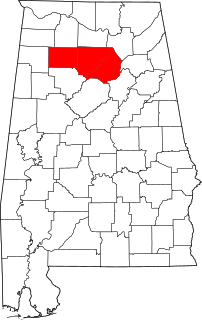 W
WThe informal "Republic" of Winston, or Free State of Winston, an area encompassing the present-day Winston, Cullman and Blount counties of Alabama, was one of several places in the Confederate States of America where disaffection during the American Civil War was strong. In Winston County, this opposition became violent and had long-lasting political consequences—deep enough to generate a legend after the war that the county had seceded from Alabama.